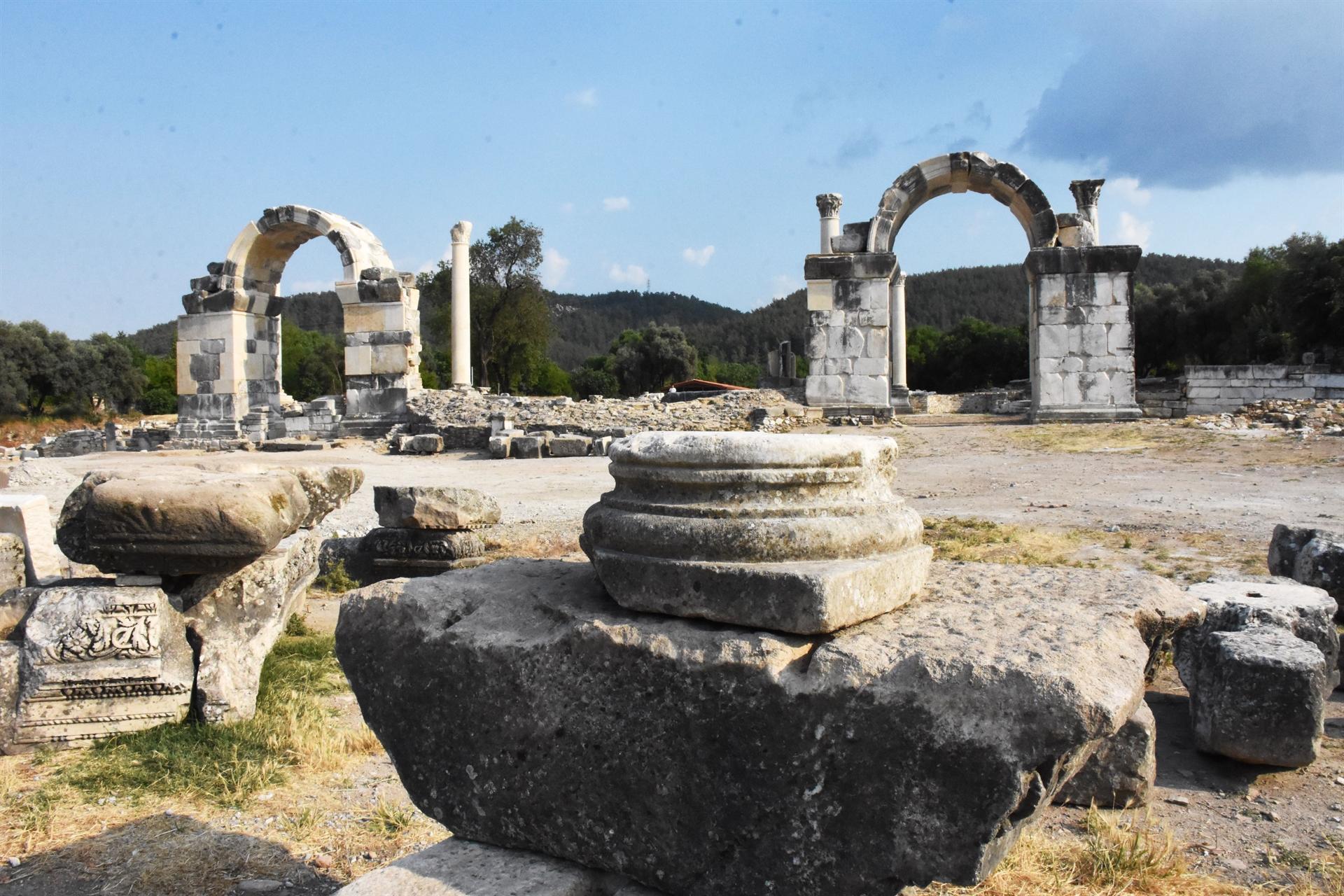
The northern city gate, connecting the ancient cities of Stratonikeia and Lagina in the western province of Muğla’s Yatağan district’s Eskihisar village, has regained its former glory.
Excavation, restoration and conservation works continue throughout the year in the ancient city of Stratonikeia, also known as the “City of Gladiators,” which is on the UNESCO World Heritage Tentative List.
The Culture and Tourism Ministry, the Muğla Governor’s Office, South Aegean Development Agency, Turkish Historical Society, Yatağan Municipality and Pamukkale University support the works carried out in the city.
Works have still been continuing in the ancient city, which is one of the rare places where artifacts from the Hellenistic, Roman, Byzantine, Principalities, Ottoman and Republican periods coexist. During the works, the northern city gate and the columns in the square in front of it have been restored.
Speaking to the state-run Anadolu Agency, the ancient cities of Stratonikeia and Lagina excavation director Professor Bilal Söğüt said that there are ruins from ancient times in Stratonikeia, the world’s largest marble city, and that they started working on the northern city gate two years ago.
Stating that they carried out excavation and restoration works in the north gate, western street, theater, village square and newly found areas in the ancient city, Söğüt said that the northern city gate had been destroyed in an earthquake that took place in 139 A.D.
Söğüt emphasized that the work carried out at the northern gate is extremely important.
“During the works, we have placed the foot stones of the doors, the arches and even the covers of the arches on the keystones. Thus, we have raised the door, where those who came from the Lagina Sanctuary for the Hecate ceremony and those who carried keys passed through. Also, this is the gate, where the Zeus statue came on a horse from the Panamara Zeus sanctuary.
Stating that two entrance doors were restored on the northern street and their arches were placed above them, Söğüt said, “The area where the northern gate is located is one of the important centers of the city. It is very important for both the city and the ancient period. Because this is the only place in ancient Anatolia that has two entrances like this. There are two entrance gates and a fountain monument between them. Its façade is two-storied and decorated with sculptures. The gate, which was restored with the financial support of the Roman Emperor Antoninus Pius in the ancient ages, has been restored nearly 1,870 years later. In the continuation of this place, we also revived the street that was destroyed in an earthquake in 365 A.D. and that was built with the financial support of Maximus.”
Söğüt noted that they gradually revived all the elements of the Classical, Hellenistic, Roman, Byzantine and Turkish periods and turned the space into an area for visitors.
